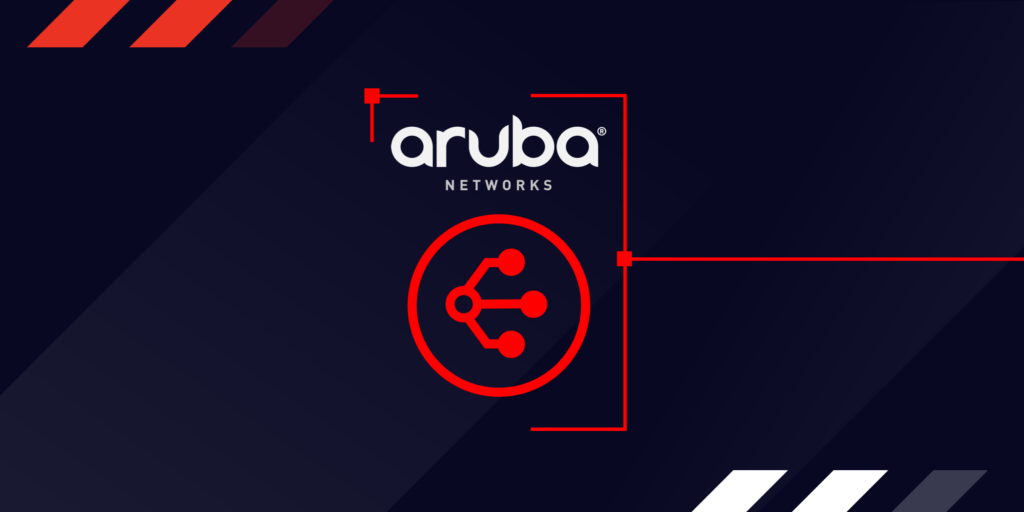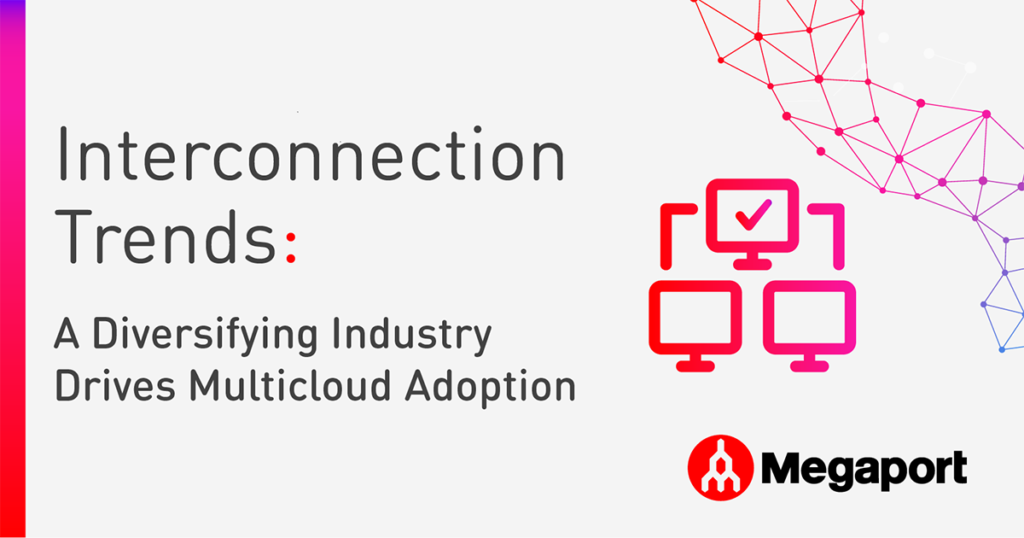
Is Cloud Storage Safe?
- Cloud networking
- April 13, 2023
- RSS Feed
Are your storage needs increasing faster than your on-premises storage can handle? We explain why cloud storage is actually the safer option – while also saving you money.
Cybersecurity breaches are becoming more frequent and advanced than ever before, and can result in the significant loss of both enterprises’ and their customers’ confidential data and money. Whether via the cloud or in a private data center, no storage method is guaranteed to be impenetrable.
Yet, InfoSec innovations are continuing to combat cyberthreats. Today, cloud security protocols are becoming more rigorous than those of traditional storage methods. And more people are trusting cloud storage: In fact, by the end of 2022, an estimated 60% of all corporate data was stored in the cloud rather than on traditional hard drives or on-premises servers.
In this blog, we explore the rise of the core types of cloud-native storage platforms, the security features and benefits of cloud storage, and share best practices and use cases for using the cloud for your enterprise storage needs.
Rise of cloud-native platforms
The shift to a “cloud-native” workload has been rising in popularity for some years now – and it’s only going to grow. In fact, Gartner predicts that “worldwide end-user spending on public cloud services is forecast to grow 20.7% to total $591.8 billion in 2023, up from $490.3 billion in 2022.”*
For remote employees, online shoppers, global businesses, and even gamers, cloud access is relied on daily and plays a crucial part in day-to-day life.
Cloud-native refers to building, delivering, and scaling computer applications over cloud infrastructures, whether it be via public, private, hybrid, or community clouds, as well as creating multicloud (more than one cloud) environments. Cloud-native services include storage containers, servers, and instant messaging channels. They run on a virtual network rather than on your traditional on-premises capital.
We saw this rapid rise of cloud-native and ‘born-in-the-cloud’ during the pandemic, which caused huge supply chain disruptions and a sudden shift to remote work for millions globally. One key feature that is often built into such apps is storage capacity.
The big three cloud service providers (CSPs) — Amazon Web Services, Google Cloud, and Microsoft Azure—continue to branch out from offering simple storage to being all-purpose solutions for how enterprises function internally and with customers.
Each CSP offers three tiers of storage functionality: 1. file, 2. block, and 3. object. While file storage organizes data into a hierarchy of files in folders, block storage groups data into arbitrarily organized, evenly sized volumes, and object storage manages data and links it to its associated metadata.
Learn more about the rise of “born-in-the-cloud” in our blog.
Types of cloud storage and their security features
With cloud-based storage, data is sent over the internet or via a private connection to third-party servers. Enterprises can send data to public clouds, use private clouds, invest in a hybrid system, collaborate in a community cloud, or branch into a multicloud architecture, depending on their needs.
Below, we discuss these various types of cloud and their storage capabilities, including how they protect data and the potential benefits and drawbacks for your enterprise.
Public cloud storage
Public cloud is the most popular type and for good reason: It’s an affordable way to access office applications, web-based email, and storage, and collaborate during testing or development. You pay for a cloud service, usually based on storage size. In return, the host stores the data, provides access, and secures it.
To ensure public cloud security, the providers encrypt the data, and all the data from one enterprise is segregated from other data streams. It provides a cost-effective data backup in case of software failures or cyberattacks on primary cloud storage.
Public cloud storage pros and cons to consider:
The pros
- Anywhere/anytime access – as long as there’s a stable internet connection, employees working remotely can easily access files through their web browser and store what they need.
- Scalability – you can dynamically scale up or down storage amount, and most cloud providers let you tailor your storage to specific application or period demands.
- Affordability – while there are costs to using a public cloud, the expense is much smaller than with on-premises storage.
- Zero maintenance – the cloud provider maintains and administers its platform, so users don’t have to hire or train staff to manage data storage and security.
The cons
- Difficult to customize security measures – public clouds have uniform security measures for all clients. It’s often difficult or impossible to customize for unique security protocol requirements.
- Egress costs – public cloud storage providers may charge you to take data out of their cloud, often to persuade you to stay in their platform and not migrate data to competitors.
- Unreliable performance – although generally reliable, performance can waver because public clouds are in a shared environment. In particular, latency can occur depending on the amount of traffic moving to and from the cloud. We’ve covered the real cost of high network latency in our blog.
Private cloud storage
Unlike public clouds, a private cloud ensures an extra level of security. It’s a customized storage solution for critical data that is accessed only by your enterprise, not shared with others as a public cloud is.
Think of a private cloud like a private road, built just for you. No other cars can share the road with you, and you won’t be delayed by traffic jams, meaning great reliability and performance.
Private cloud storage pros and cons to consider:
The pros
- Increased, fine-tuned oversight – companies can control their data more closely due to its on-premises and private nature. This means they can oversee and monitor data effectively (something we’ve covered in our blog before).
- Better compatibility – applications are synced across your private cloud storage, which means better compatibility and communication between clouds. This improves performance and reduces latency when accessing and moving stored data.
The cons
- Higher costs – hardware expenses, data centers, software licenses, and even the creation of dedicated IT experts in your team for deployment and maintenance can mean increased costs.
- Time- and labor-intensive deployment – private cloud deployment can be more difficult as you’re using in-house resources to set up and maintain infrastructure.
- Decreased scalability – you may not be able to scale your capacity and performance capabilities up and down—a feature that’s crucial for any business’ agility—as easily as with leading public cloud storage providers. You may be locked in to paying for more network resources and infrastructure than you use.
- Limited remote and external access – along with stricter security measures, there are tougher access restrictions and device limitations.
Hybrid cloud storage
Hybrid cloud combines the benefits of public and private cloud, and is a great option for data recovery. It gives companies flexibility by ensuring they’re not paying for underused resources and storage. You might opt for hybrid if you’ve already invested in server technology or need lower latency.
Enterprises can designate certain data into a private cloud for regulatory or other requirements, while sending data that needs to be more accessible and is lower-risk to a public cloud. With careful planning, a hybrid cloud can offer the best of private and public cloud security: Private offers security designed and designated for only your enterprise, while public has oversight and updates by cloud providers’ security teams, with your encrypted data backed up in multiple locations.
Hybrid cloud storage security pros and cons to think about:
The pros
- Control of security risks – your enterprise can store regulated or highly protected data in a private cloud, under your oversight, and send less-sensitive data to public cloud(s) at lower cost.
- Reduced chance of lost data – your enterprise has instant redundancy by storing data across multiple clouds.
- Ease in meeting government regulations – you can choose data streams best suited for compliance.
The cons
- Security management – when splitting up sensitive or protected data to public and private clouds, SLAs need to specify how providers will meet compliance requirements.
- Incident handling – internal teams have to work with external cloud providers to handle any security breach or other issues.
- Logistical issues of covering all potential security threats – check that cloud providers have responses, such as app monitoring or authentication protocols, for risks your enterprise would most likely face.
Community cloud storage
If your enterprise is part of a group with shared security needs and purposes, such as a network of healthcare companies, a legal firm with multiple branches, or a school system, you might choose community cloud storage. Community cloud is a type of private cloud setup in which a group shares servers. It fosters a customizable and collaborative environment.
As a type of private cloud, community clouds are not accessed through the public internet. It has more security features than the public cloud model.
Community cloud security pros and cons to consider:
The pros
- Greater security and privacy – because it is not accessible to the general public, community clouds are deemed more secure and less at risk of your data falling into the wrong hands.
- More customizable – as organizations with similar cloud needs share servers, community clouds can be configured according to the needs of that community/industry, unlike a universal public cloud.
The cons
- Not a “one-size-fits-all” – community clouds generally suit only specific use cases.
- Finite data storage and bandwidth – capacities are shared among “community members.”
Multicloud storage
Here, you create and use many cloud storage or computing services under one cloud “architecture,” hosted in either public or private clouds. Multicloud options appeal to enterprises that want to use multiple vendors for cloud hosting, storage, and varied applications. As this Megaport blog states, they “empower organizations to more easily mix and match platforms and vendors and avoid being locked in to individual cloud providers.”
For example, government records or high-volume financial transactions could be delegated to AWS; app-related testing and developing files can be stored in Google Cloud Platform; and Microsoft Azure can store files related to conferencing, email, and desktop apps. All use Software as a Service (SaaS) applications for basic business interactions and offer storage packages.
As with hybrid cloud, multicloud draws from the best of private and public cloud security. Private cloud is customized and overseen by the enterprise. Public cloud transfers most security responsibility to cloud providers, but oversight is still crucial due to the complexity.
Multicloud storage security pros and cons to think about:
The pros
- Multiple, scalable packages – you can choose “best-in-breed” among cloud providers to maximize savings, necessary features, and apps, while scaling bandwidth. This also reduces risk of vendor contract lock-in.
- Instant updates – your enterprise can outsource security updates while meeting compliance requirements.
- Ease of data transfer – you get low latency, high speed, and high bandwidth, all with convenient, user-friendly access.
- Edge computing and security – multicloud brings state-of-the-art security features, computational power, and necessary apps to handheld devices and remote workforce.
The cons
- Oversight challenges – the extensive scale and volume of services and architectures available can make comprehensive oversight more difficult.
- Delays in security controls – deployment of new features can occur more quickly than security measures can match pace.
- Monitoring public-facing endpoints – a higher number of public-facing endpoints can increase the attack surface.
- Increased costs – internal IT teams need a customized, adaptable strategy toward security features across all providers. This added cost is a necessity to keep data safe across multicloud architectures.
Overall security benefits of cloud storage
Although private, public, hybrid, community, and multicloud have different pros and cons, each generally brings the following benefits to your enterprise:
- 24/7 security monitoring – outsourcing security to companies with deep pockets and a high need to protect clients’ data means benefiting from their dispersed, experienced security teams.
- Cost-optimized, scalable storage – most leading cloud providers have a wealth of options, many focusing on scalable storage. This means you’re not locked into technology purchases that don’t meet your needs.
- Cross-platform security updates – the headache of updating security is outsourced to cloud providers, which have deeper pockets.
- Auto-duplication in multiple locations for redundancy – instead of storing data in traditional on-premises data centers, cloud options provide instant data replication.
- Instant data recovery and backup – because of redundant data storage, backups are easy to install with added benefits of speed and large bandwidth.
Security in traditional, on-premises storage
With traditional storage, the enterprise is responsible for purchasing/leasing and updating all software, hardware, and associated infrastructure. Data—whether on-premises or in branch offices—is backhauled to enterprise-managed servers for inspection.
In the best scenarios, traditional on-site data centers (which we explain more about in our blog, The Role of the Data Center) offer these protections:
- Physically secure locations with limited entry points
- Protocols that limit who can enter
- High-tech surveillance and security guards
- Zero-trust software systems, firewalls, and encryption software.
Internal or third-party IT teams stress-test servers to find the weakest points and patch security holes. However, with the rise of cloud computing, backhauling often leads to wasted bandwidth, increased latency, and inconsistent network performance.
How can Firewall as a Service (FWaaS) protect your network? Find out here.
Security in cloud storage
With the exponential rise in the volume of data migrated to the cloud, cybercriminals’ attempts have followed suit. But cloud providers continue to get smarter. Firewall as a Service (FWaaS) is an innovative way to protect data while lowering capex.
A Network as a Service (NaaS) provider such as Megaport enables FWaaS to assess all traffic and deny any data perceived as a threat. FwaaS doesn’t require on-site installation costs or infrastructure upkeep.
Storing data with cloud providers means sharing it on multiple servers, which comes with the following benefits:
- Automated redundancy – if one server fails, or if you fall victim to a ransomware attack, you can retrieve data from another server. Cloud storage companies routinely check the data’s integrity. Amazon Web Services states that “the chance of losing your data from the cloud is just one in 100 billion.”
- Surveillance – the data is monitored 24/7 by security teams. They check for cyberthreats, install software patches if vulnerabilities are found, and stress-test to see how quickly they can respond to risk.
- Physical protection – the servers are in secure locations in protected data centers.
- Software encryption – data is encrypted before you send it, en route, and on the cloud provider’s servers.
- Regulatory compliance – for controlled industries, cloud storage companies can offer high levels of safeguards for financial and other critical data.
- Protection against distributed denial-of-service (DDoS) attacks – cloud storage providers will attempt to check, absorb, and scatter DDoS attacks before they reach your server.
- Zero-trust software systems – these lower the chance of entry at the weakest points, as described in this Megaport blog.
- Control over remote collaboration – you can determine who has access to which data.
“The chance of losing your data from the cloud is just one in 100 billion.”
- Amazon Web Services
Best practices for safe cloud storage
Cybercriminals prey on human error. These steps will help members of your enterprise better protect stored data. Consider adding them to your IT team’s processes and reviewing them periodically.
- Track data flow – map the “flow between systems, devices, apps, APIs, and the cloud” to have a bird’s-eye view of the entire cloud framework.
- Ensure encryption is handled properly – understand how cloud providers apply encryption when transferring data.
- Insist on two-factor authentication – all employees and contractors should use a password and a one-time verification code to log in to cloud storage accounts.
- Copy your account password or encryption key – this can be a digital task by putting the password or key behind a firewall, or it can be written down and saved securely. We explain parameter and secrets management more in our blog.
- Monitor shared files – return to shared files after projects are completed and ensure access is still needed.
- Test the storage provider – list your essential storage needs, and start a free trial to make sure it meets your expectations.
- Change passwords regularly – check password managers and change compromised passwords immediately. Otherwise, change passwords once a year.
- Audit what’s in the cloud – remove outdated files periodically, and update who has access to all data.
- Archive historical data off the cloud – this will save money that can be used toward active cloud use.
The verdict
Thanks to its ability to back up and restore your enterprise’s mission-critical data, as well as provide extensive customization tailored to your unique needs, cloud storage is not only a safe way to store your data—whether that’s high-res branding assets or confidential customer information—but it’s also a much more high-performing, reliable solution in comparison to traditional on-premises storage.
The type of cloud (public, private, hybrid, community or a combination) and its subsequent storage offerings your enterprise will benefit from the most will depend on your business’ unique needs. If storing lots of low-sensitivity data is what you’ll require the most, the public cloud can be a cost-effective and low-maintenance solution.
However, if your industry needs to meet strict compliance requirements, such as those of government or financial institutions, then the secure private cloud is the safest option to not only protect your data, but also that belonging to your customers, therefore reducing risk of both data and monetary loss.
How Megaport can get you started with safe cloud storage
Megaport Cloud Router for bolstered cloud security
You can customize public, private, hybrid, community, and multicloud storage solutions to protect your assets. Megaport offers private connections to cloud storage providers to help your enterprise rest easy when it comes to mission-critical data.
Megaport Cloud Router (MCR) bypasses the public internet (and its issues with bandwidth and latency) and securely and reliably routes your data where you want it. You control the bandwidth and the destinations. Offering private Layer 3 connectivity, consistent security protocols are applied to all of your data, even if it’s sent to different cloud service providers.
With the innovations and flexibility among cloud options, every enterprise should be able to find a cloud storage plan that is safe, convenient, and supports business growth or fosters good governance.
If you choose a private solution for all of or the most crucial data, you will have a safe way to access and transfer your data as well as protect that of your customers, clients, and partners.
Discover how Megaport’s solutions could help you – book a demo today.
Source: Gartner® Press Release, October 31, 2022 “Gartner Forecasts Worldwide Public Cloud End-User Spending to Reach Nearly $600 Billion in 2023”
GARTNER® is a registered trademark and service mark of Gartner, Inc. and/or its affiliates in the U.S. and internationally and is used herein with permission. All rights reserved.





